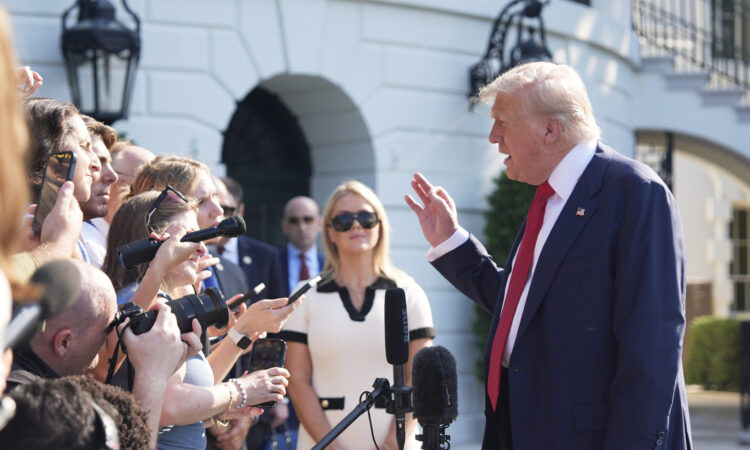
President Trump’s dollar policy is shaping up as a riddle worthy of the Sphinx. Asked today about the greenback’s slide in currency markets, he muses that “a weak dollar makes you a hell of a lot more money.” Yet just days ago he had averred that “The dollar is king,” and “we’re gonna keep it that way.” This idea of a currency that is simultaneously weak and all-powerful sounds like an enigma, but it is among the paradoxes of the fiat money era.
After all, the dollar’s current strength or weakness is measured in terms of other fiat currencies, which gyrate in value against each other. That’s been the case since 1971 when President Nixon abandoned the dollar’s gold convertibility. At the time a dollar was worth a 35th of an ounce of gold. Today it fetches less than a 3,330th of an ounce. This is the context of debased fiat currencies in which Mr. Trump is touting a “weak dollar.”
Mr. Trump explains that “I’m the person that likes a strong dollar,” even if a weaker currency has its advantages. The president advises, as well, of a strong dollar that “it’s good psychologically, it makes you feel good.” He even allows that “I love strong dollars.” Even if a strong dollar “sounds good,” though, he concludes, it’s damaging to America’s export prospects. “You can’t sell trucks, you can’t sell anything.”
Mr. Trump points out, too, that other countries, like China and Japan, have been looking to capitalize on the fiat money system to make their exports more competitive. “I will never say I like a low currency,” he says, “but you remember the battles I had with the yuan, with China and with Japan” and its yen. “They always wanted a weak currency. They’re trying to get a weak currency now.”
What, though, of the downside of a weak currency, and the dollar’s diminution in terms of the basis of value, gold? Mr. Trump concedes of a strong dollar that “it is good for inflation, that’s about it. And we have no inflation.” Yet that claim is belied by the consumer price index, which showed inflation in June rising 2.7 percent over last year, some 30 percent higher than the Fed target. There are fears, too, that tariffs could trigger higher prices.
Nor is it clear that a weaker dollar is necessary to revive America’s manufacturing sector. After all, these columns have explained, “America had a strong dollar during two of its periods of greatest industrial growth — the late 19th century, when it was on the gold standard, and the post-World War II era,” under Bretton Woods. In those years the dollar was convertible into gold, growth was high, and inflation was low.
More broadly, it doesn’t become the president to talk down the American dollar. What is logical for Mr. Trump is to lead the fight to reform the monetary system in a way that avoids debasing the currency. There’s starting to be interest in this strategy across the country. Feature how states like, say, Texas are restoring a role for gold in the day-to-day transactions of the marketplace as a way to return to the ideal of constitutional money.
Mr. Trump’s political foes, too, are catching on to the dollar’s weakness. “Since Donald Trump’s inauguration,” Congressman Ritchie Torres gripes, “we have seen an 11% decline in the value of the dollar, the steepest decline in more than a half a century.” That makes imports more expensive, he says, making it “the equivalent of a $300 billion hidden Trump tax.” That kind of talk on affordability marks an opportunity for Democrats.
It could be that Mr. Trump’s tactic of weakening the dollar could be profitable in the short run, especially for exporters. The profits under this policy, though, would be measured in dollars that are weaker than they ought to be. This underscores the need to restore a global system in which all currencies are defined in gold. That would keep nations from manipulating the value of their fiat money, and foster stable global growth — without resorting to riddles.




